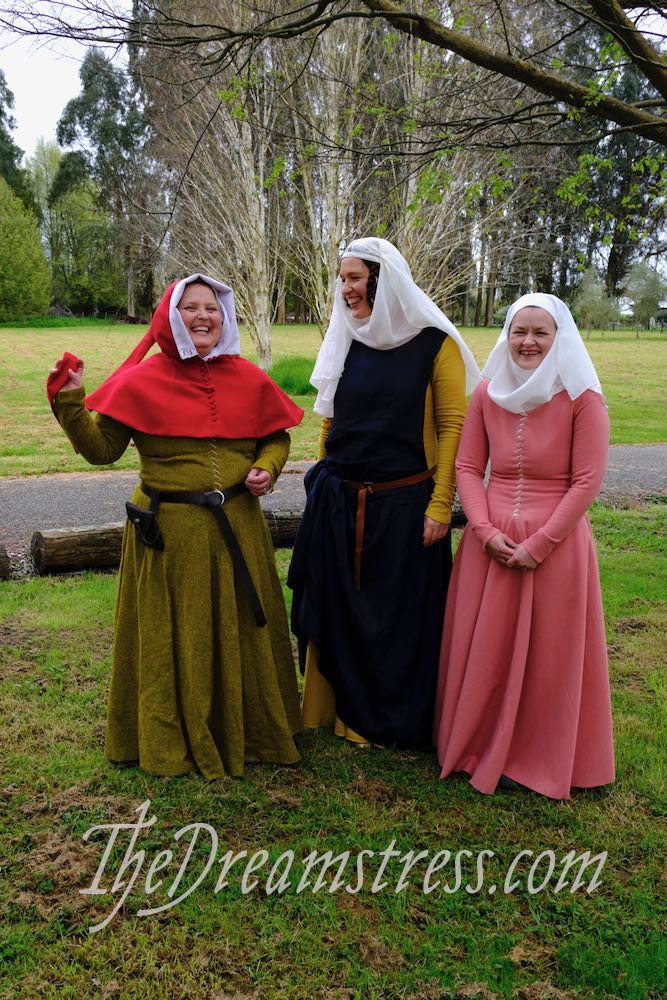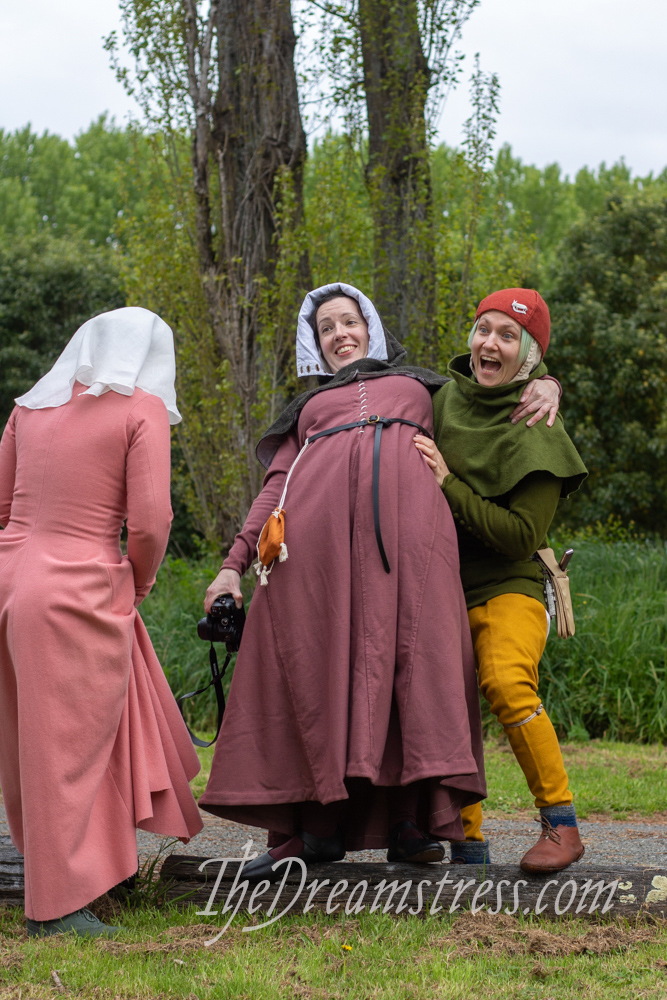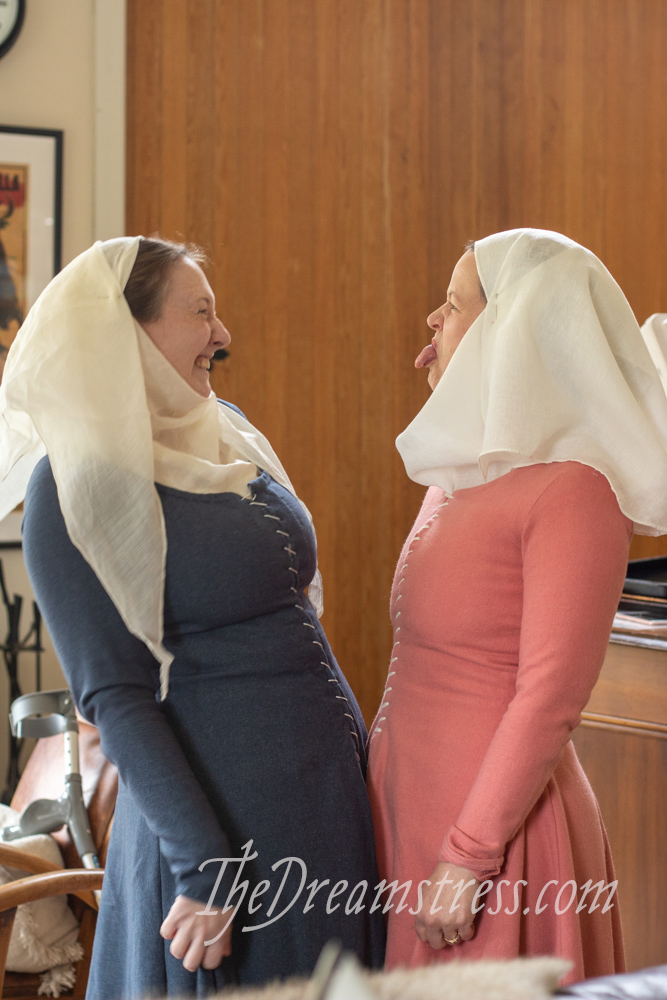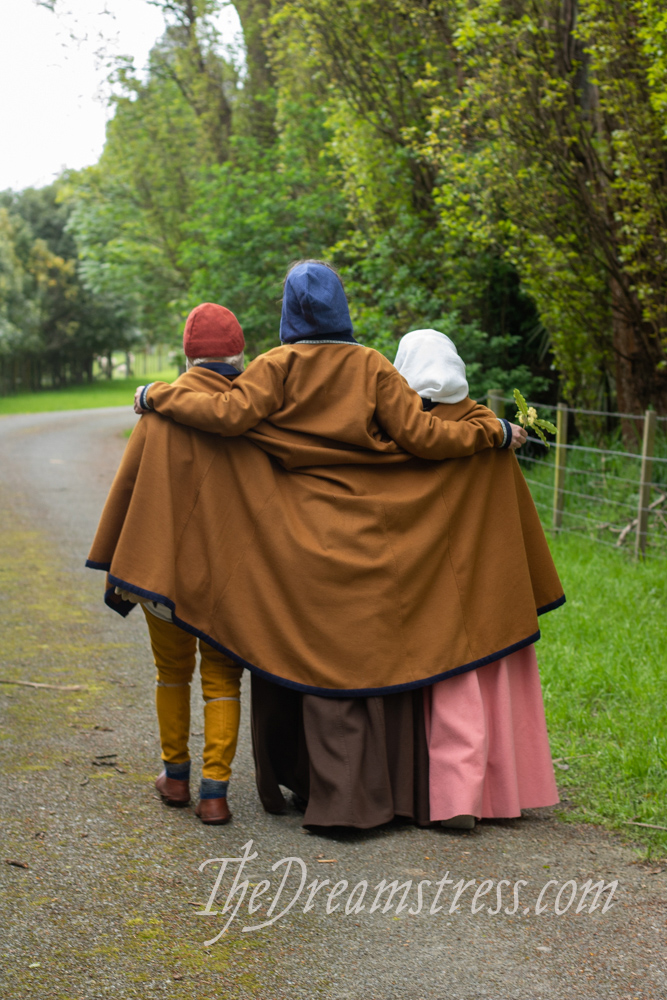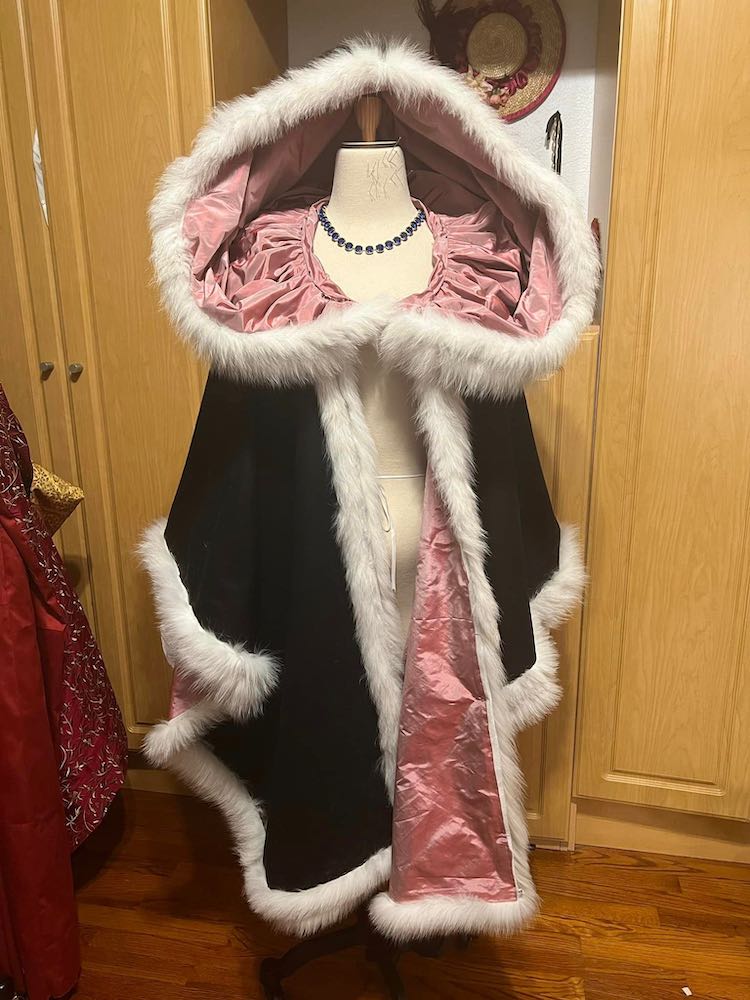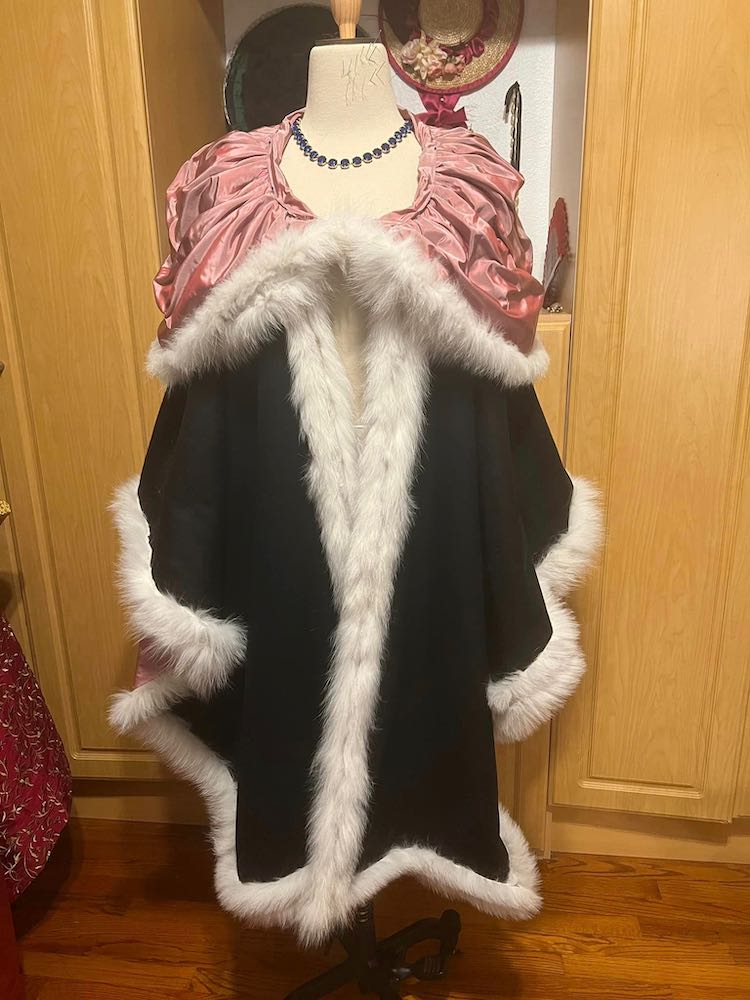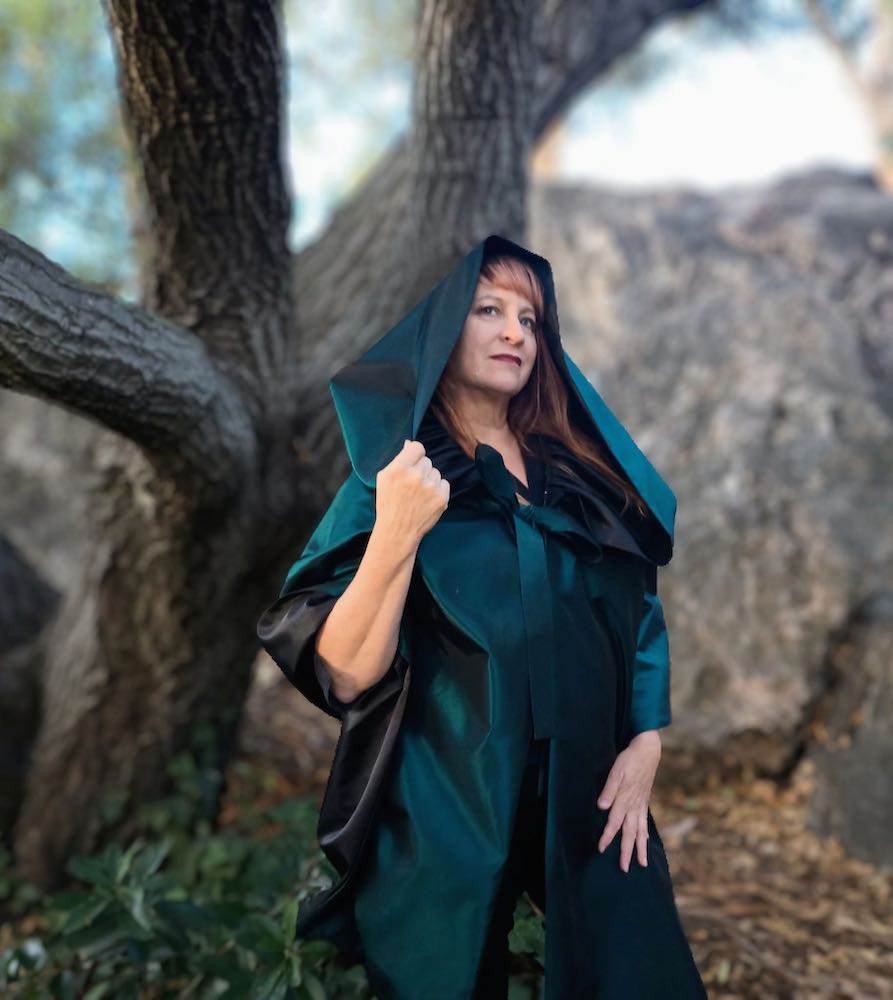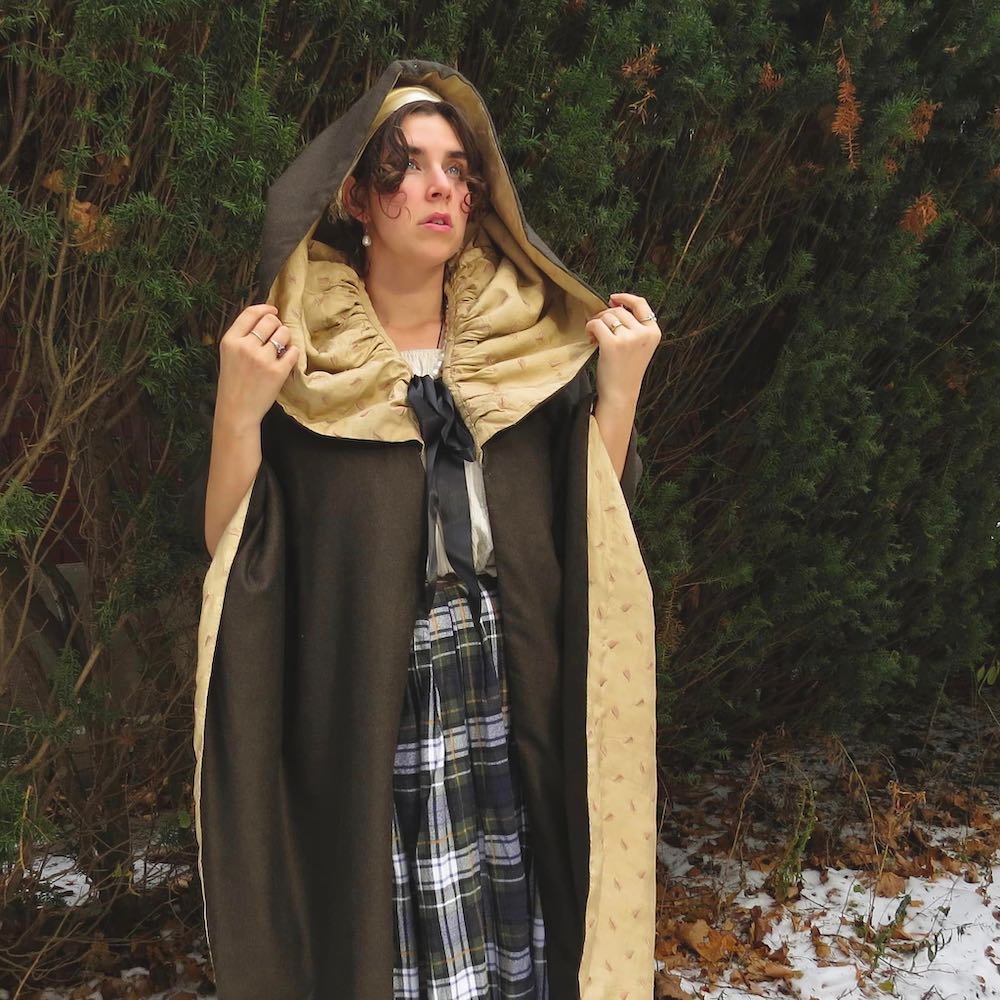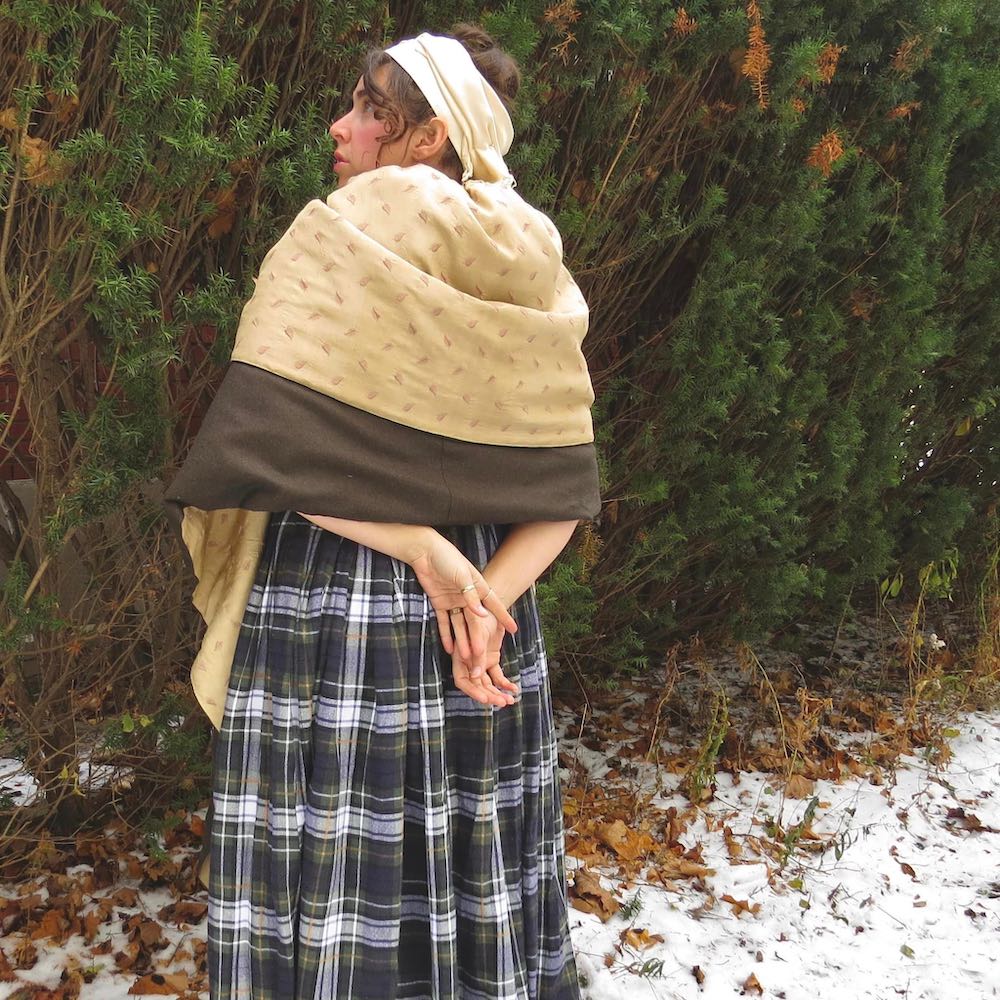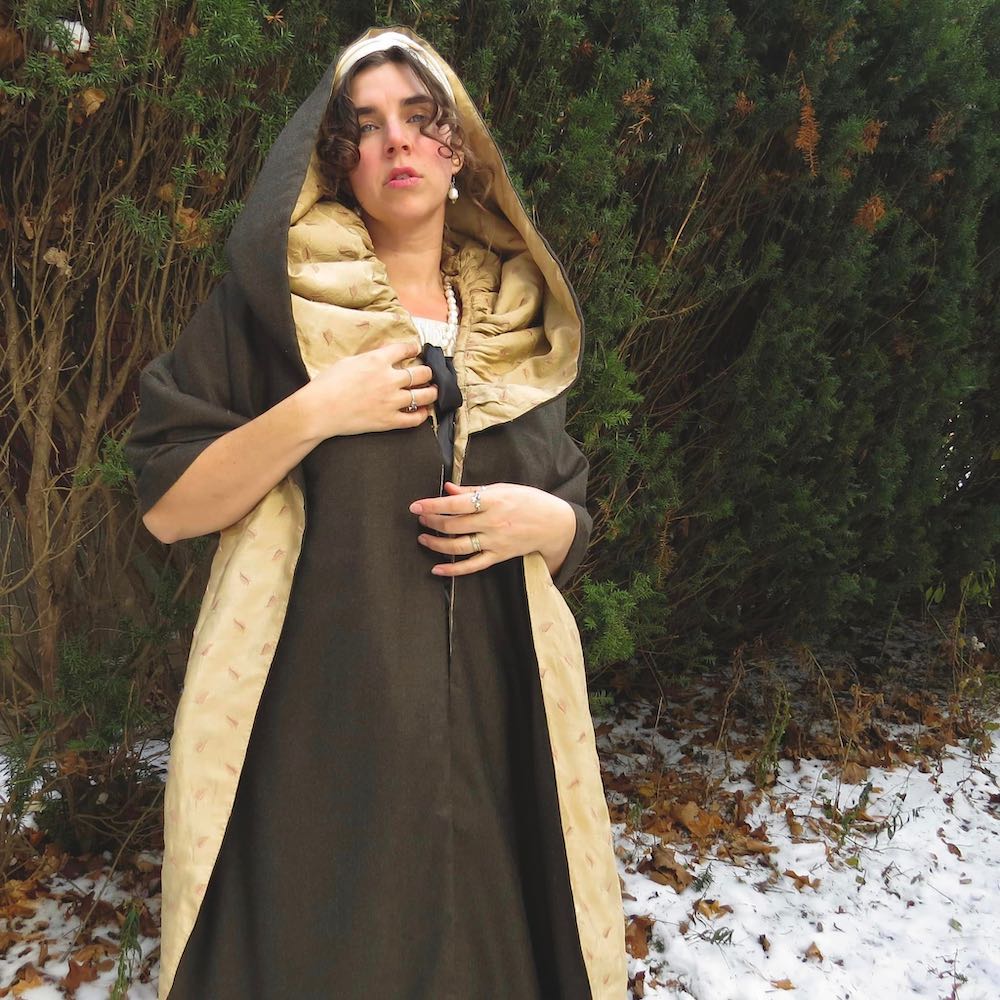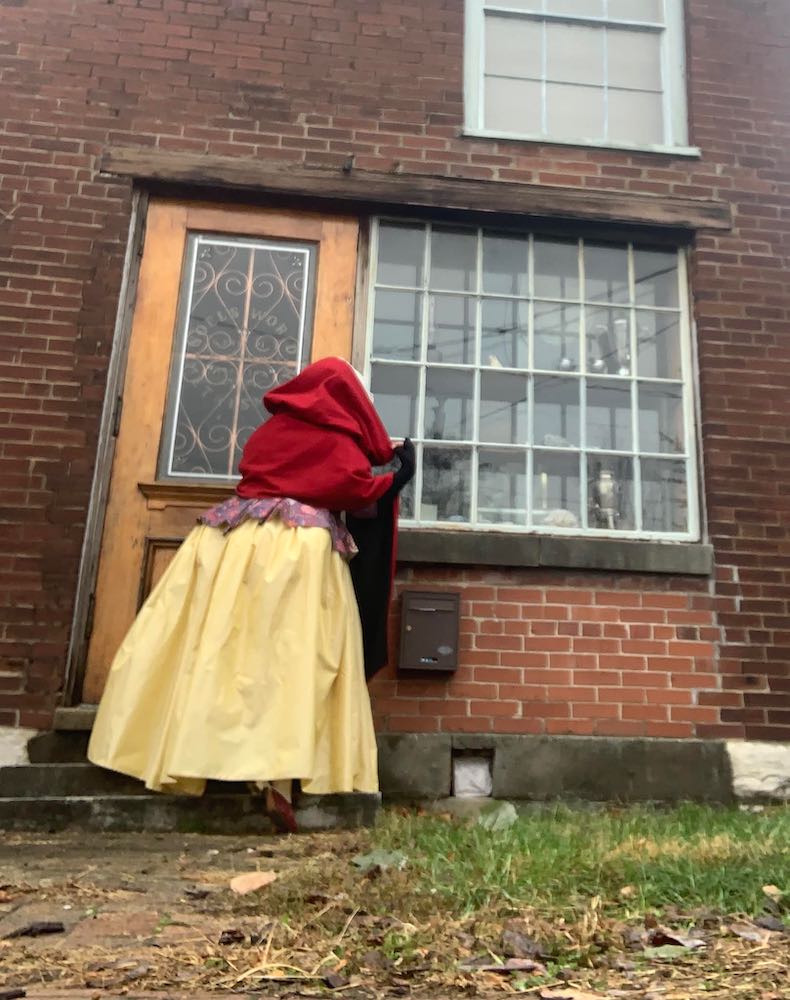I’ve been in love with second-half-of-the-14th century fashion ever since 2015, when I made my first 1360s gown.
Between life in general, the demands of my job, and Scroop Patterns, I’ve never managed to make another one, until now!
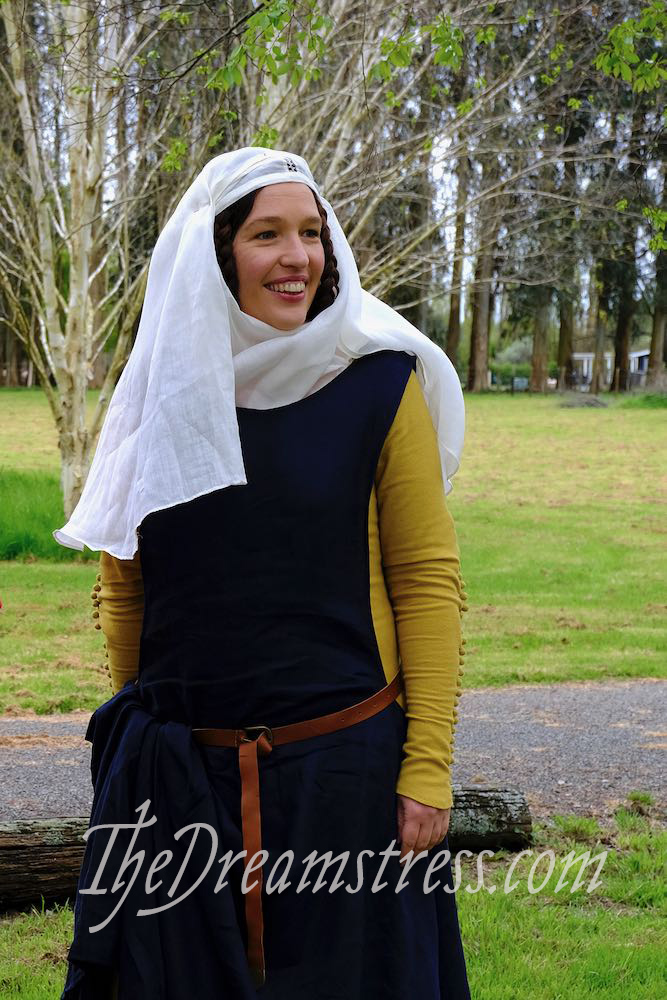
I bought some beautiful vintage yellow wool at Fabric-a-Brac in Wellington back in 2017, and knew it would be perfect for a 1360s gown, and that there was exactly enough.
Back in 2020 my local costuming friend group decided to do Medieval, so I helped a bunch of them make custom patterns based on the techniques I used for my original gown, and I started one of my own. I got it done as far as sleeves, and wore it sleeveless for an event at Zealandia, but only managed to finish it in October this year, just in time for our annual historical retreat.
Here’s a quick photo essay of the making process. I used all the same resources I used for my first dress.
The back panels, with the back gusset set in:
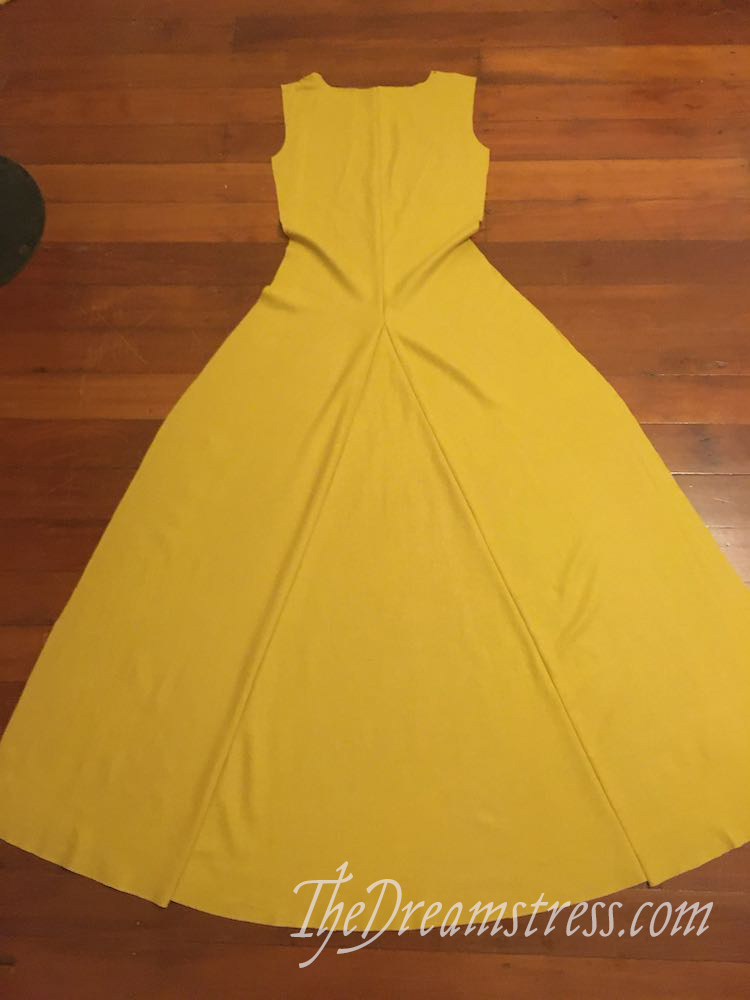
And from the wrong side:

Pressing your seams is very important for a good result! My main seams are machine sewn. My work is so demanding of my hands that I have to be careful about how much handsewing and machine work I do.
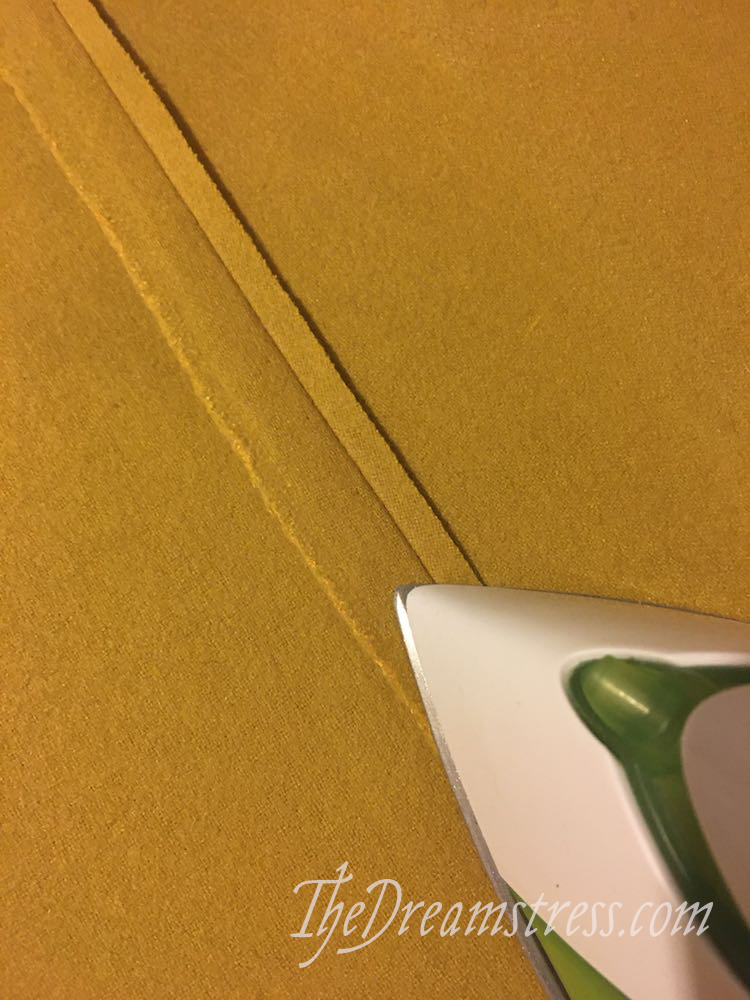
And here’s the back with the side gores attached:

And the front, with half of the front gore attached, and a strip of linen reinforcing for the front lacing pinned in:
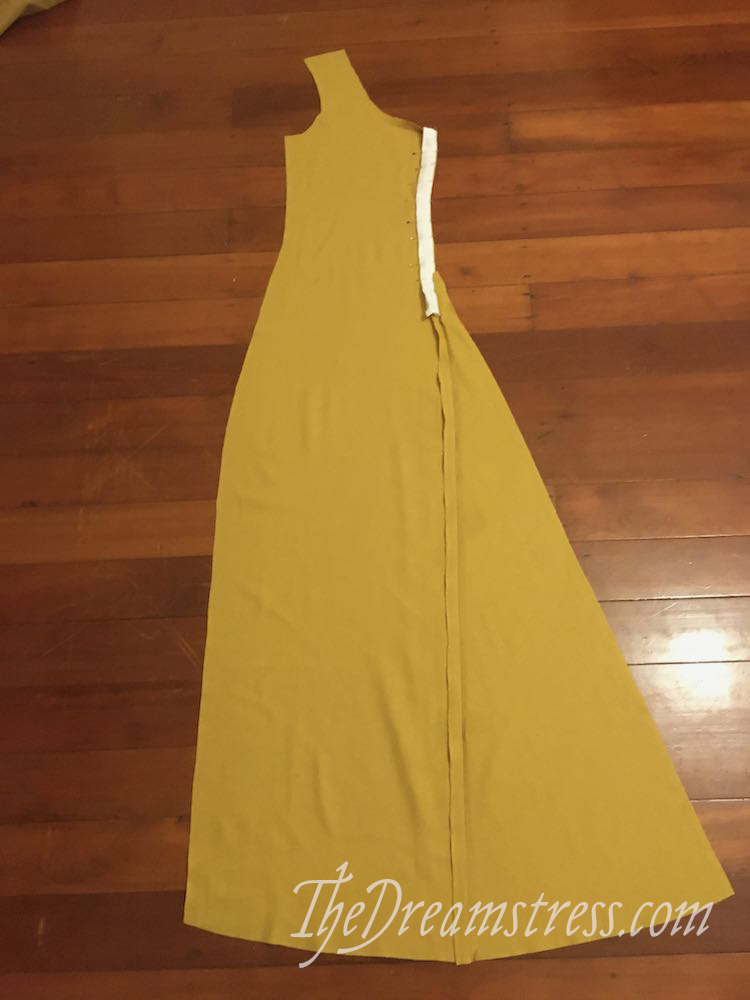
Catching down the front reinforcing:

Please note that I an NOT an expert in Medieval garment construction, and did not do the research to make sure that every stitch I used was documented for the places and ways in which I used them.
More reinforcing of the front strip. There’s a narrow cord run down the front edge and held in with prickstitches to support the front lacing.
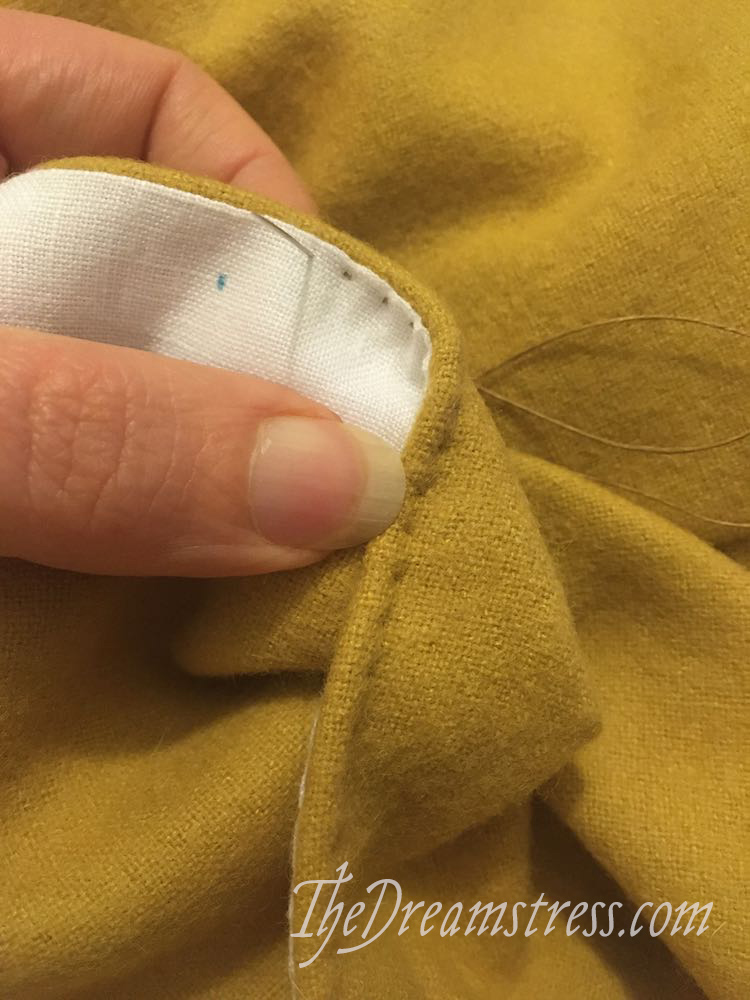
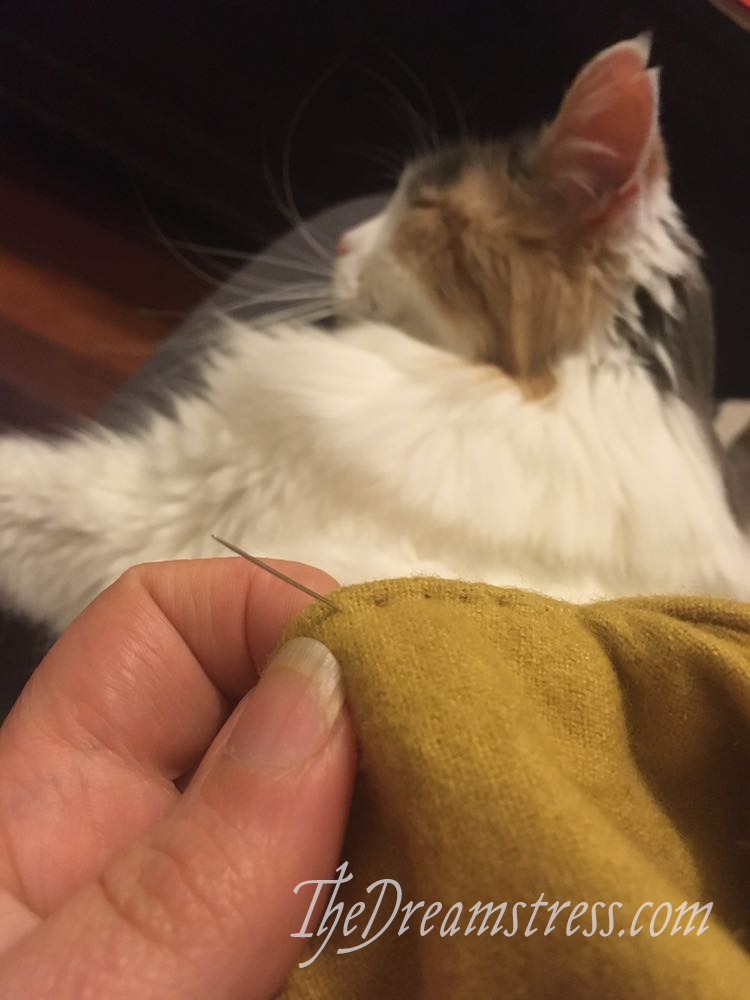
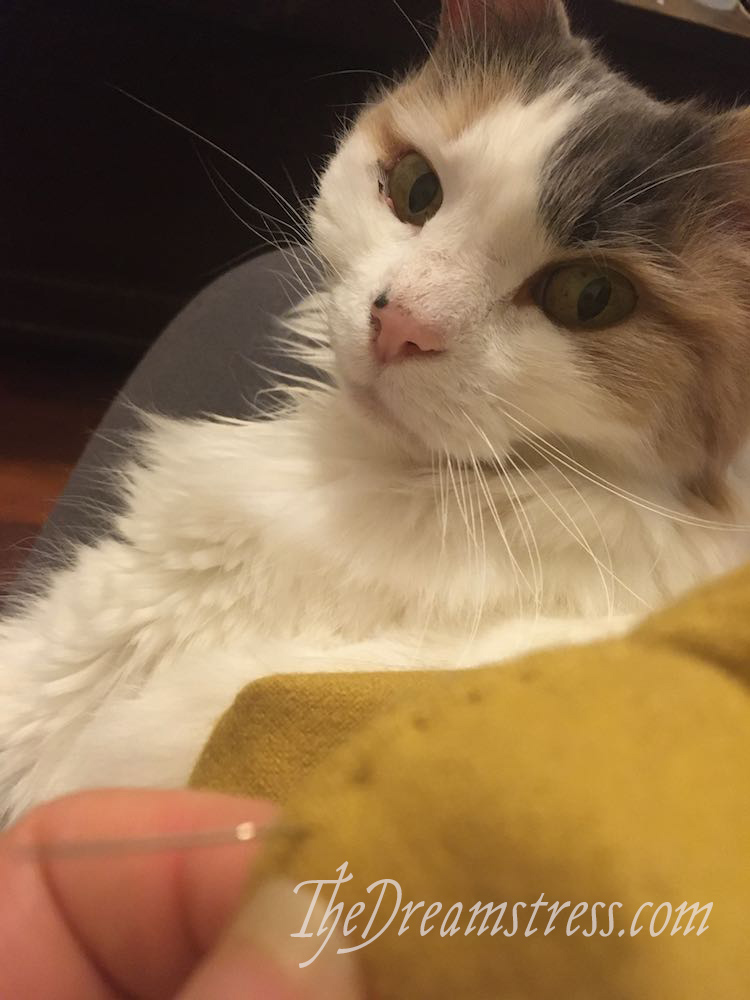
Working on my lacing holes:
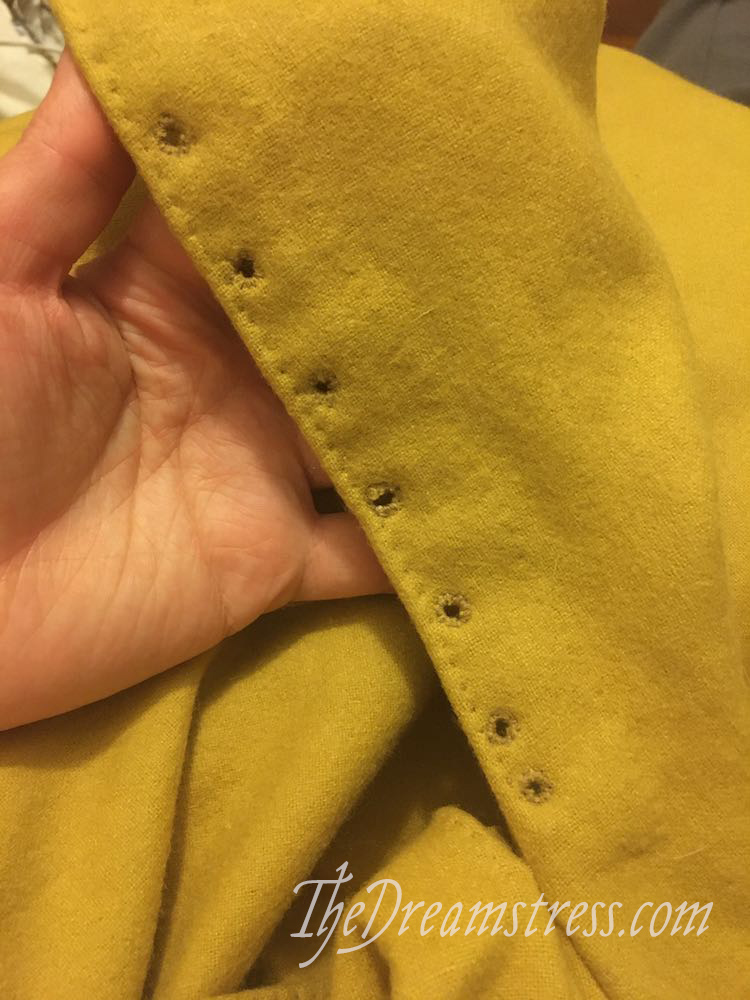
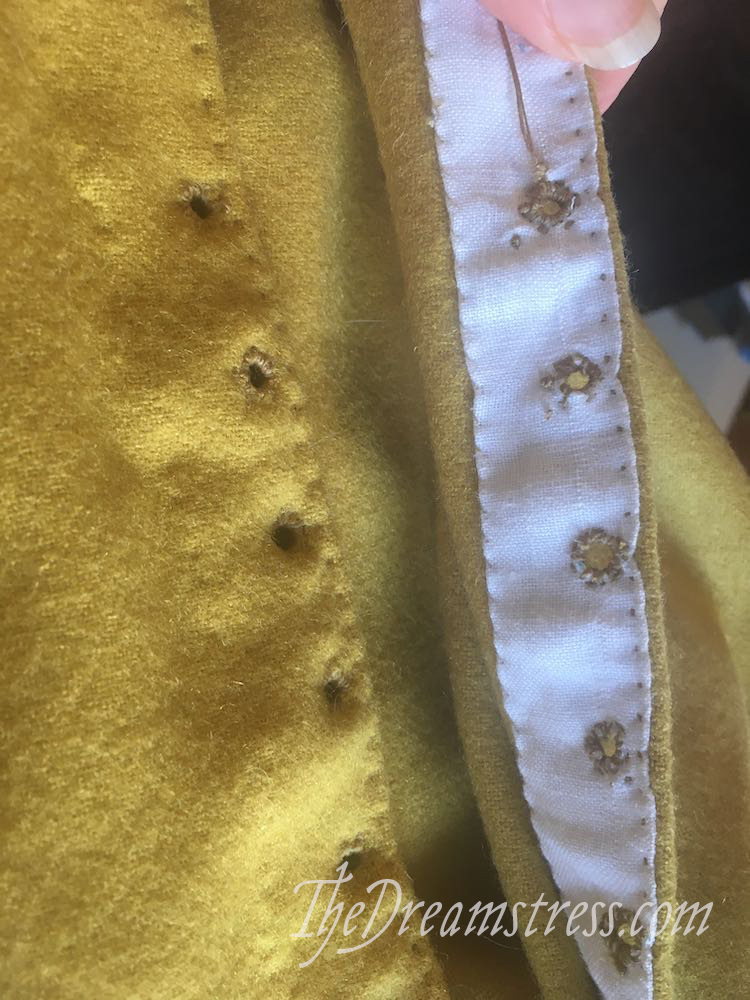
I’ve done a little series of knots around each lacing hole before moving on to the next one, so that if the thread wears out and breaks, the stitching is still secured.
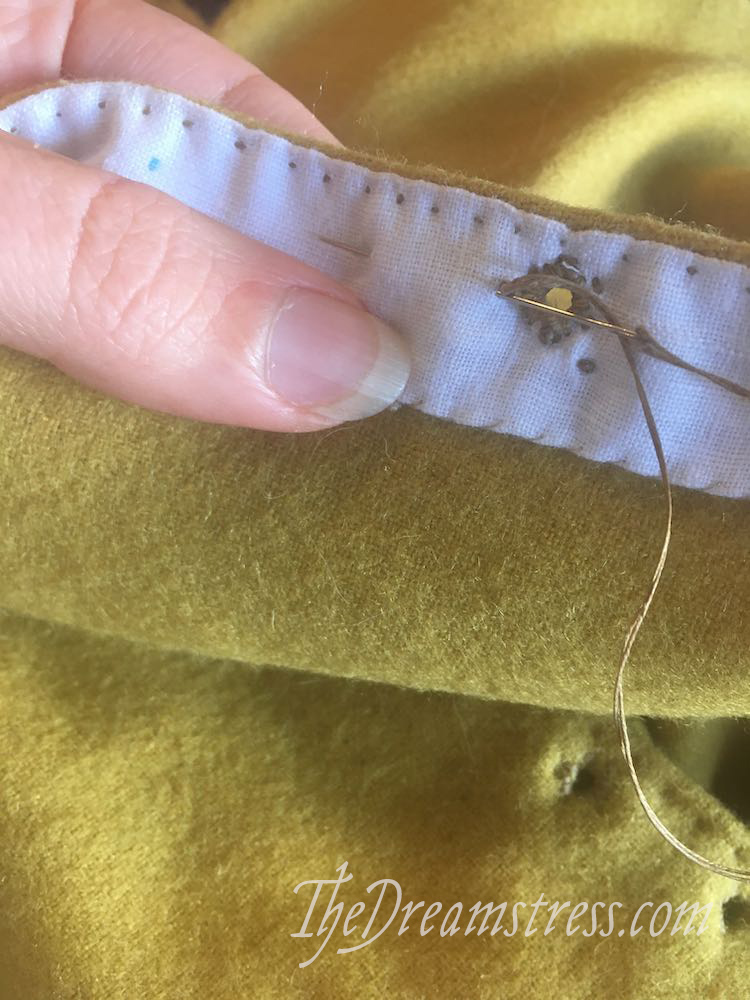
Stitching down the neckline. I’m really not sure if a herringbone stitch is accurate here, so do not imitate it without doing your own research if you care about accuracy!
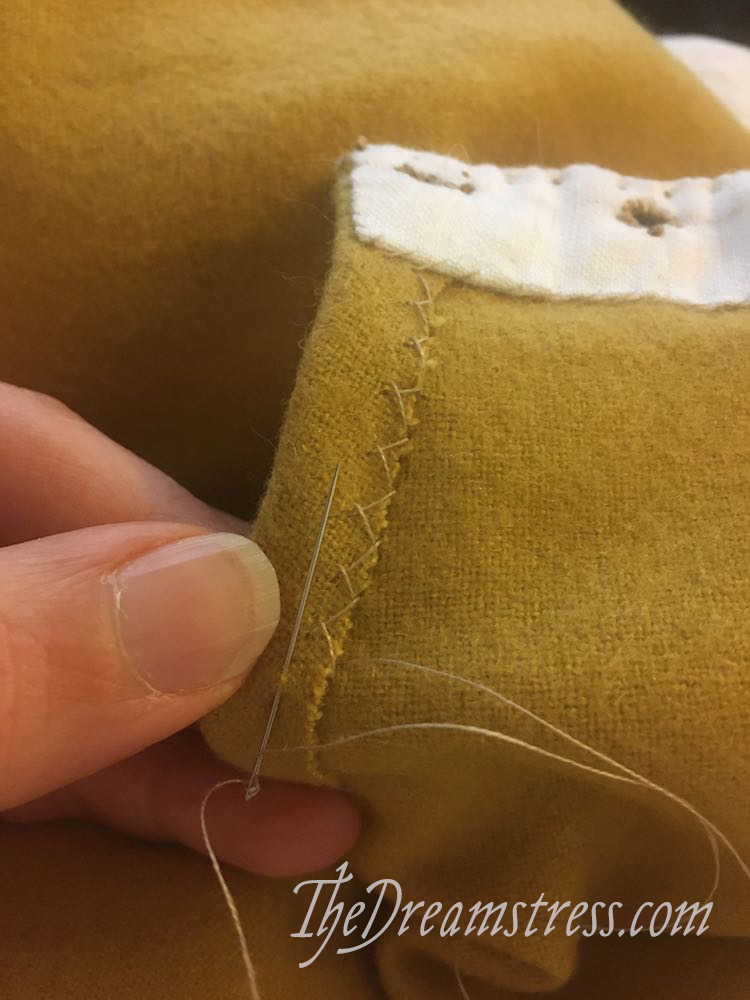
And that’s the point at which the gown stalled, because I misplaced my medieval sleeve pattern (I’m convinced I lent it to a friend), and did not have the energy to re-draft another one at that moment.
Finally in August of this year I decided I really needed to finish this gown because we were having a Medieval day at this years historical retreat, and my original Medieval dress is…snug.
So, I made lots and lots of buttons using the same cloth button making technique I used for my first dress.
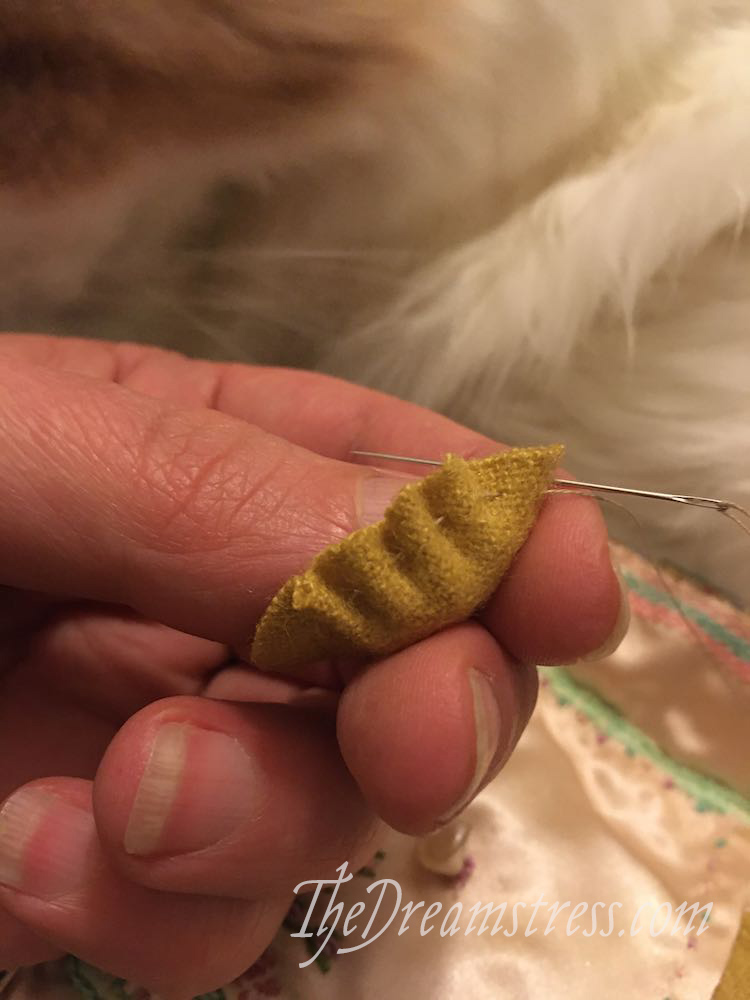
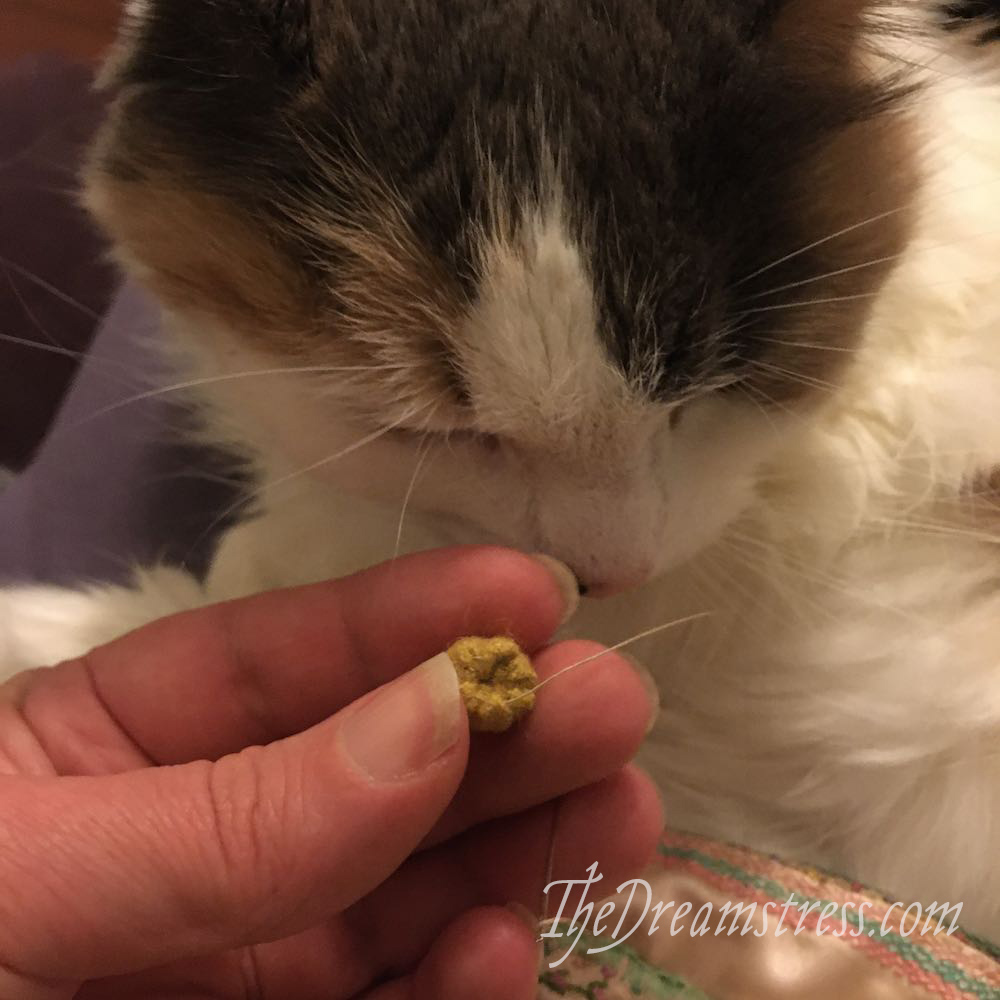
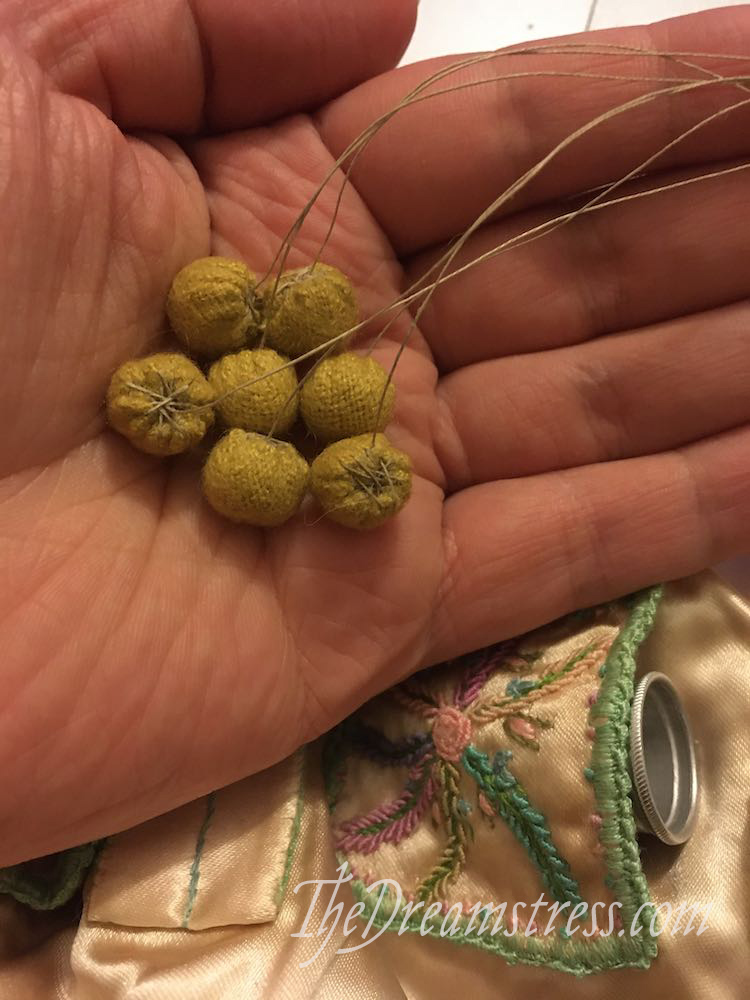
And then braved another bout of sleeve patterning.
I cheated. I took the photograph of my old sleeve pattern, scaled it based on the width of my floorboards, traced it off, and made a toile based on that.
Five toiles later, I had a workable sleeve that juuuuuuuust fit on my remaining fabric, with a little piecing (piecing is period!).
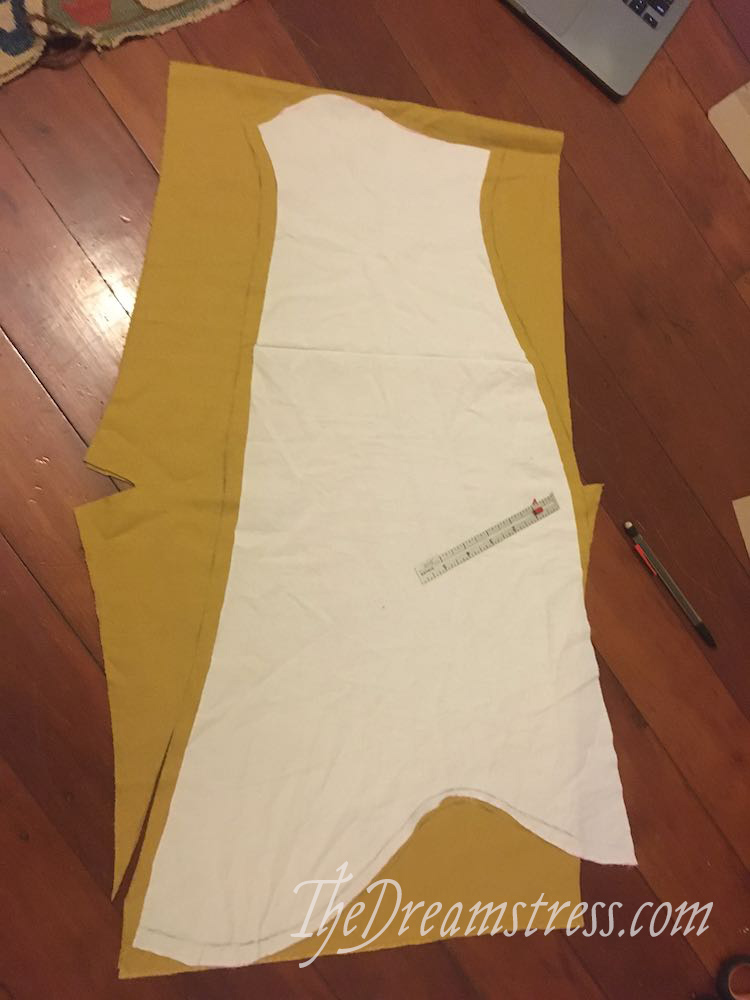
Sewed that up, and reinforced the sleeves openings with linen strips:
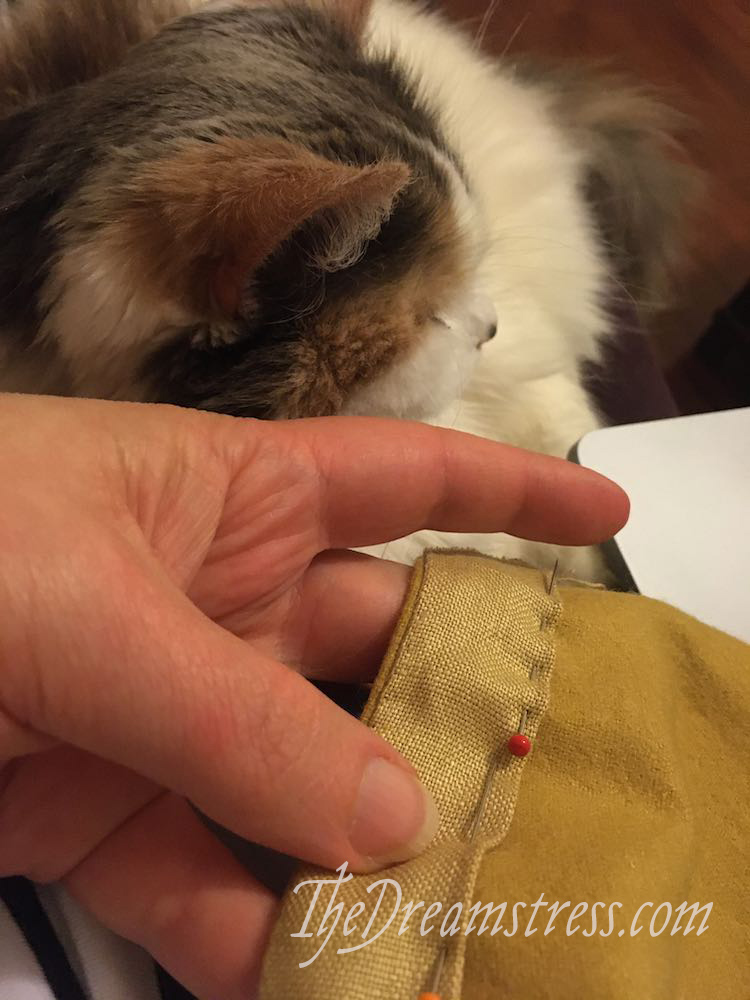

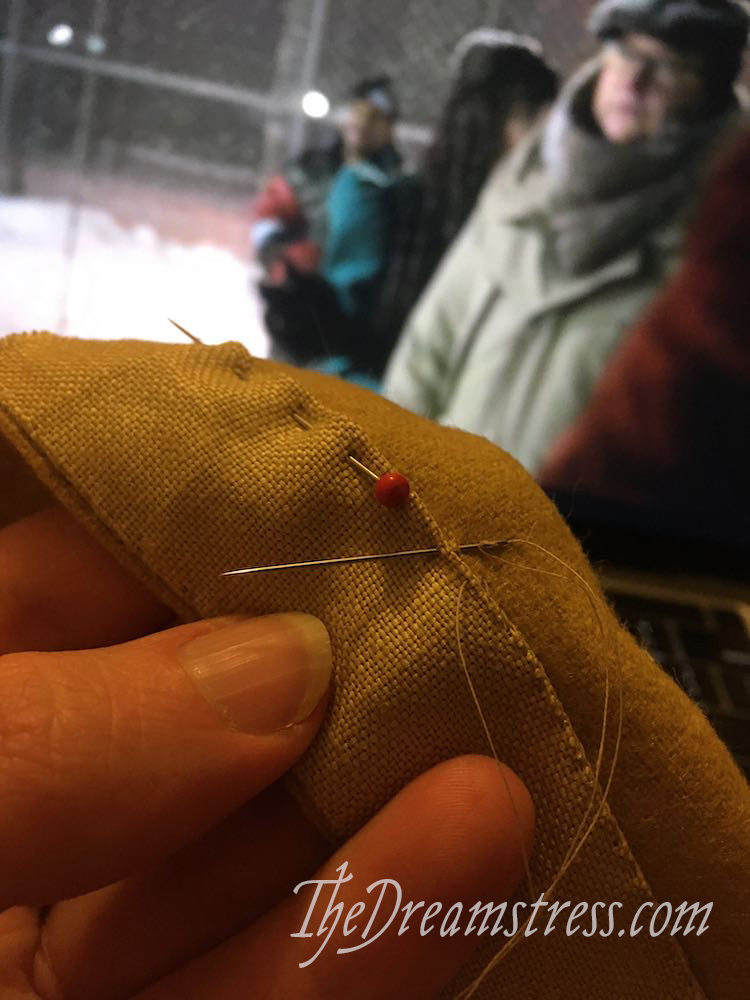
Then it was on to buttonholes.
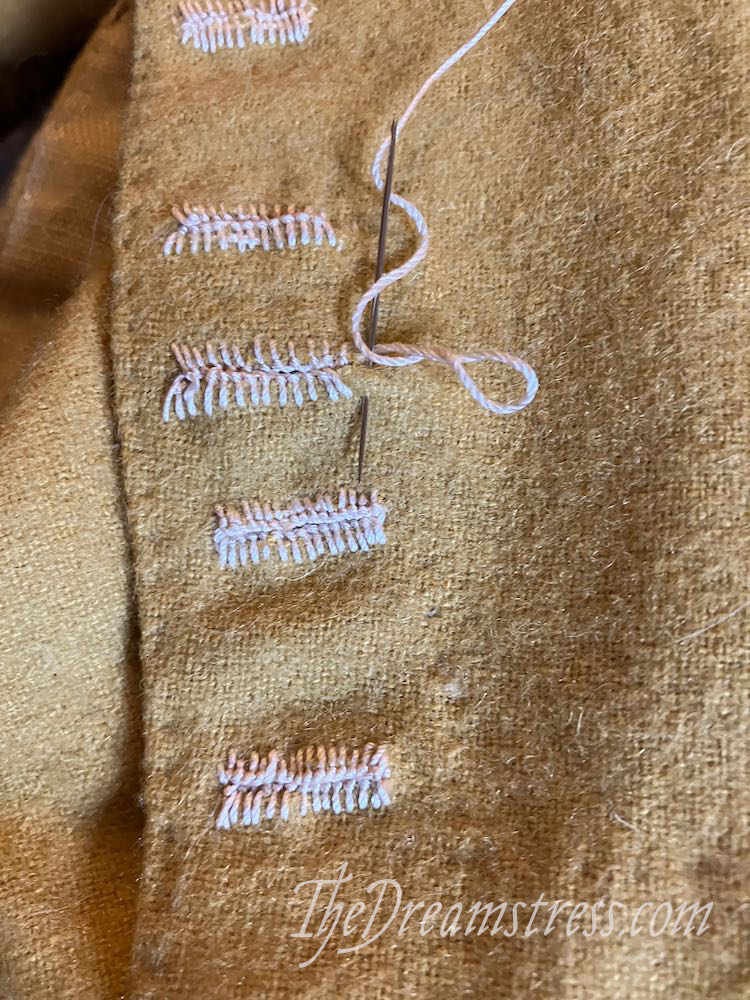
This is where I made a mistake. I started my buttonholes on the flight back from Hawai’i to NZ after a family trip home. I just guestimated at buttonhole spacing. I got it wrong, and had to add back in other buttonholes, so my spacing varies, and I ended up with two more buttons on one sleeve.
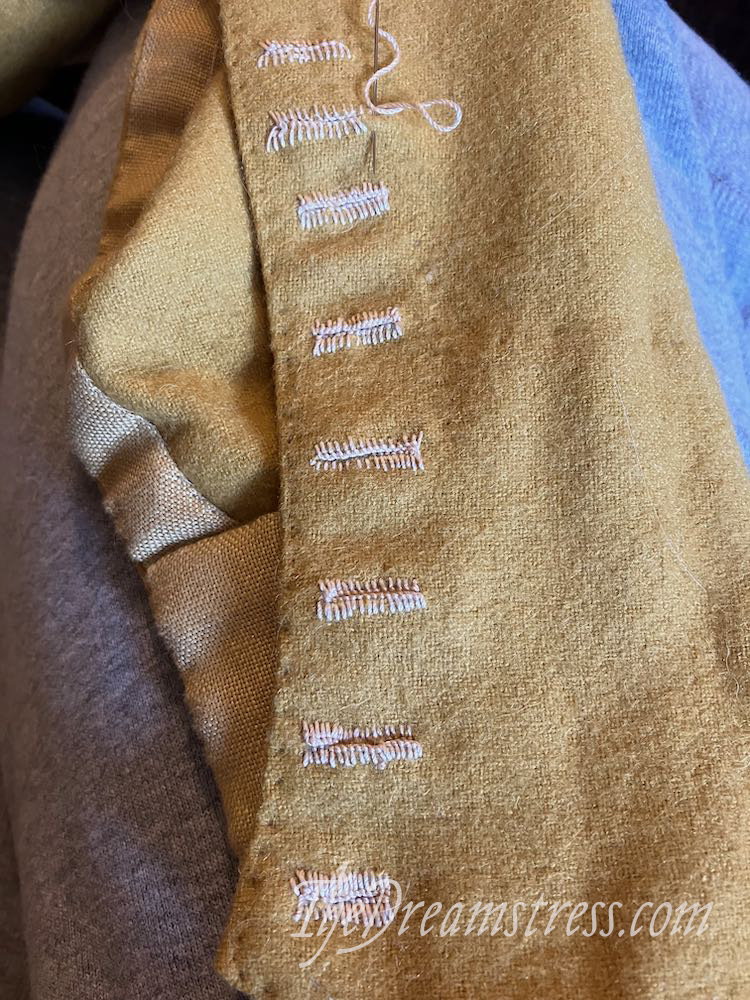
I mostly used La Cotte Simple’s tutorial. Matsukaze Workshop has two great blog posts on different buttonhole techniques through the ages (second one here) that are super helpful for understanding how they change over time.
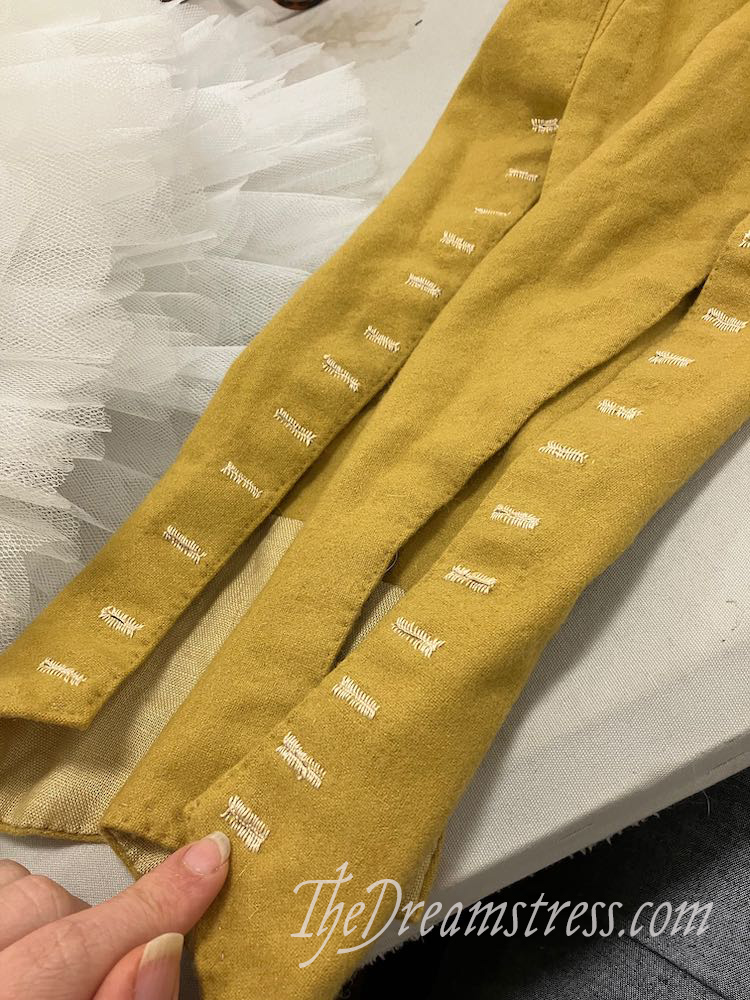
I’m working with vintage silk buttonhole twist. The number of buttons and buttons ended up being determined by how much thread I had!
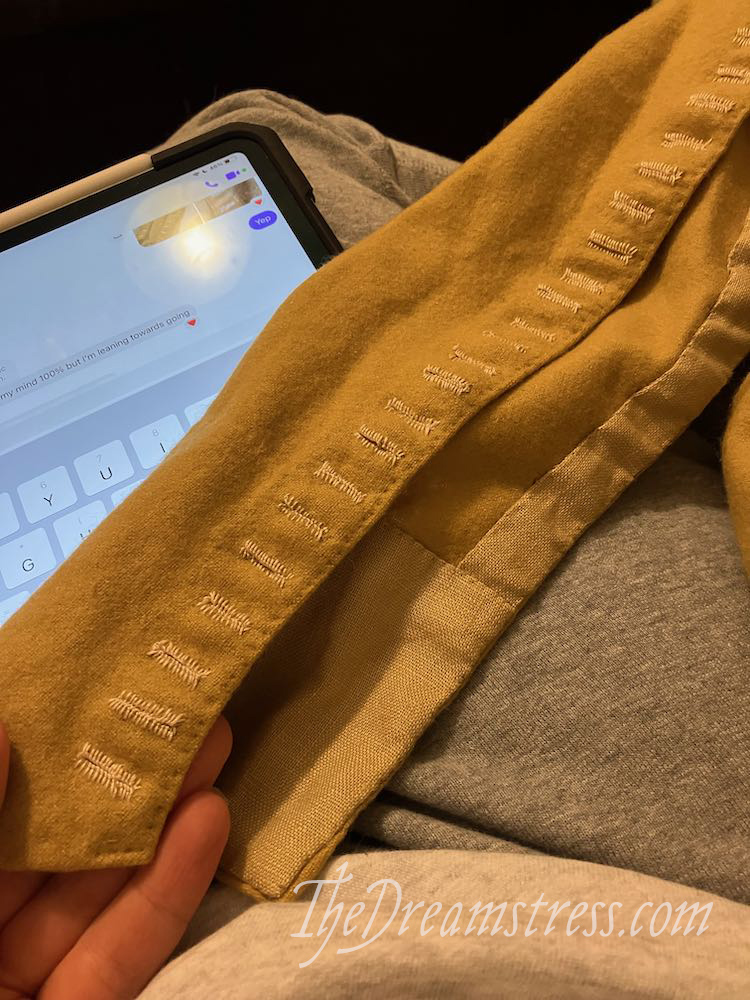
Then it was time to sew on the buttons.
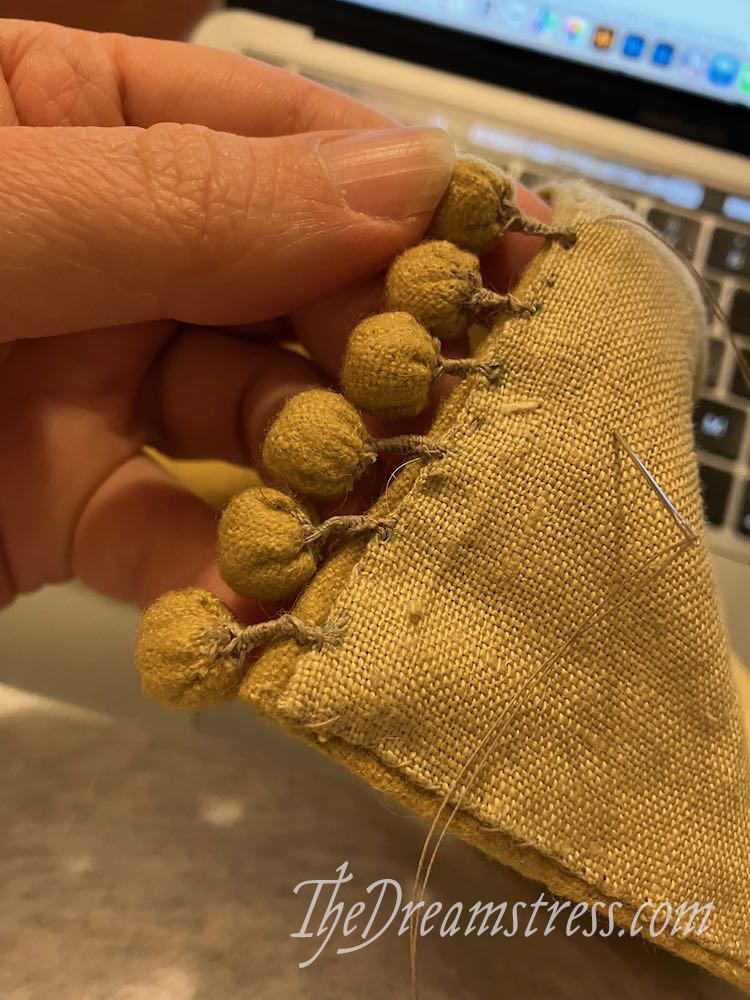
I just love making their little stems. There’s something so satisfying about turning the buttons into little cartoon trees attached to the dress!
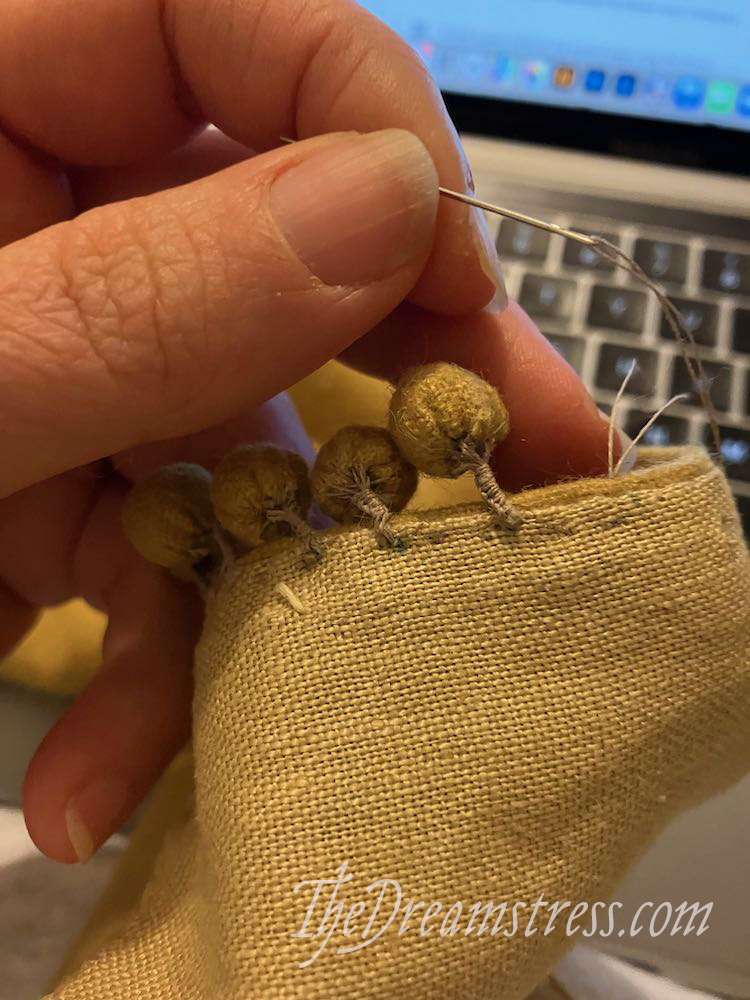
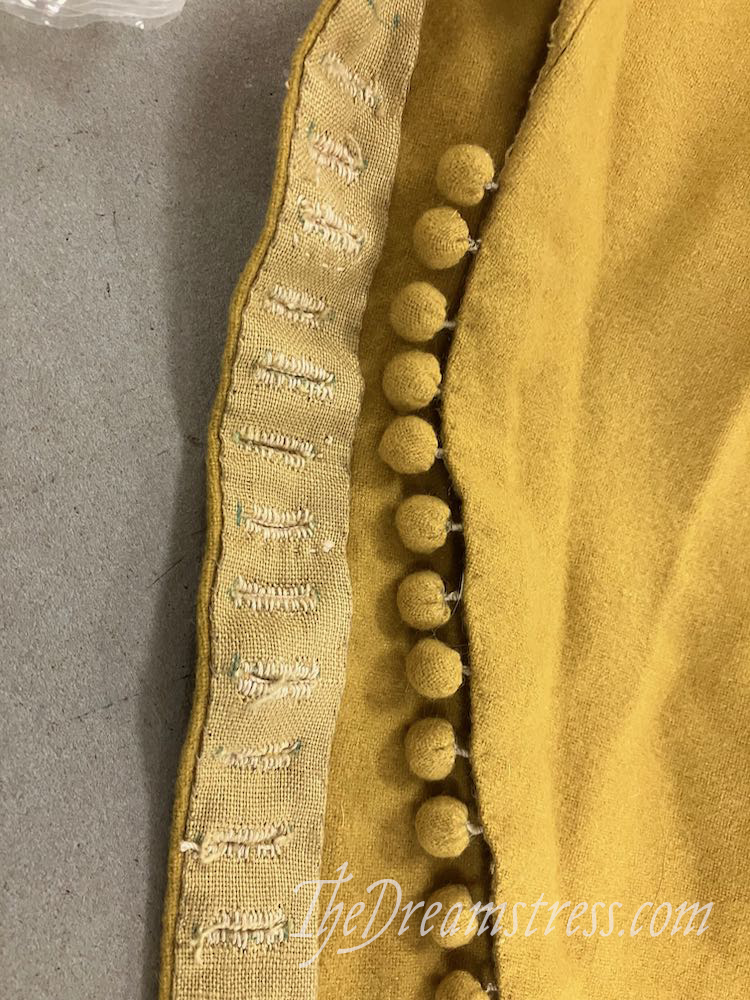
And we have sleeves!
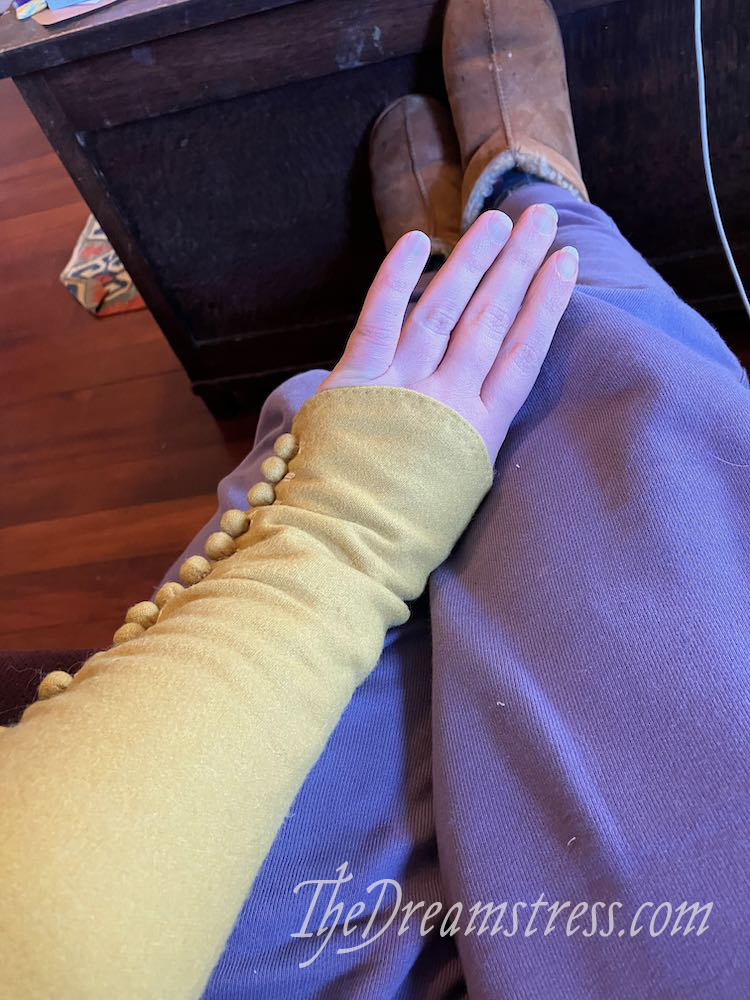
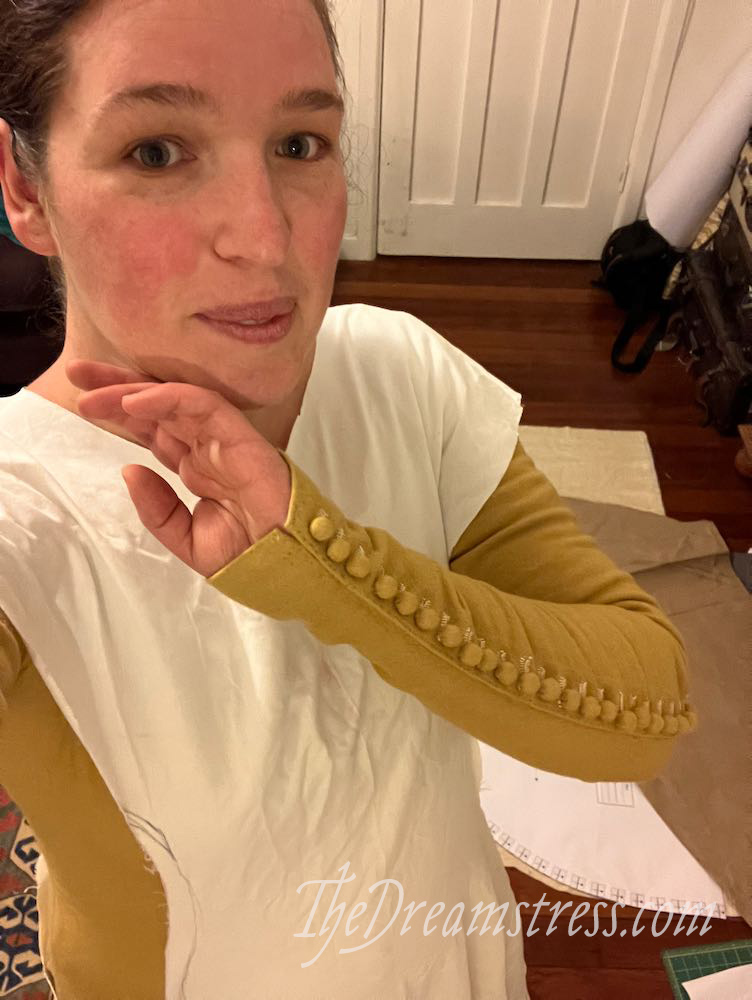
And a full dress!

I still need to take photos of the dress without my surcote on. I’ll do that once I’ve had time to walk off the post holiday midriff snuggness! (and also once it stops being so hot. It’s a little muggy at the moment for a wool dress…)

I also feel that the sleeves may be a tiny bit long from the upper arm to the elbow, so I may see if I can remove them from the dress and shorten them at the armscythe. Maybe…



